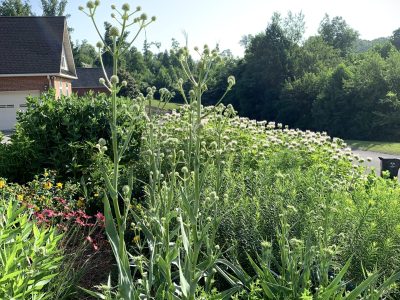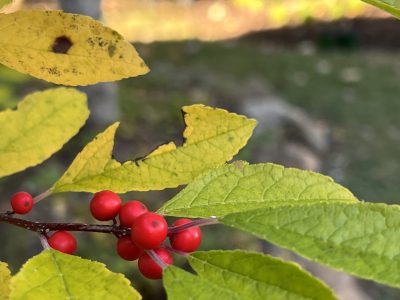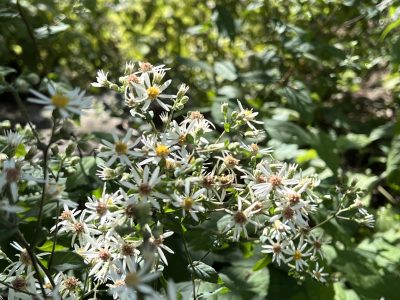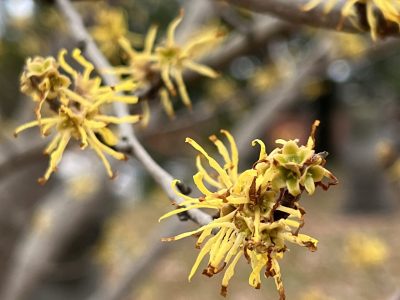



Native-Inspired Vengeance Horticulture

Mergoat Land Design and Restoration rejects the norms of conventional landscaping in an effort to coalesce the human desire for visual beauty with the urgent need to restore native plant communities—for the benefit of a multitude of species.
We collaborate with our clients to transform lifeless lawns and sites overtaken by invasive species into resilient ecological communities—leveraging ecological knowledge throughout the creative process.
SERVICES
We approach the Master Plan from a holistic and ecologically-informed perspective to craft a full-spectrum landscape design and long-term management strategy for your property. We believe this is the ideal way to approach ecological restoration, because it allows our team to consider the broad contours and conditions of your property, working down to the specific details of each microhabitat as we craft a design that melds function, beauty, and ecological resilience.
Included:
- In-depth site consultation where we determine your property’s aesthetic, functional, and ecological goals
- A collaborative process between you and our designers as they draft a master plan for your property
- A finalized design + strategy which will serve as a guide for installation and ongoing maintenance at your pace
Invasive species management is the foundation of all ecological restoration. Native plant communities are unable to thrive when noxious plant species compete for light, water, nutrients, and space. Many of our native habitats have been completely ravaged by plants like privet, bush honeysuckle, kudzu, mimosa trees, and many more. We provide systematic, species specific, and full spectrum management of invasive plant species.
Included:
- Site consultation where we walk through your property together and discuss your goals
- Take an inventory of problematic plant species and develop a management strategy
- Removal and management of invasive species in stages, according to the strategy
This option is meant to aid the DIY gardener in two ways. First, doing a site analysis gives us a chance to take an inventory of the plants on your property and any special conditions that may need to be addressed. Second, it gives you a chance to work with us as a consultant and collaborator on your projects.
Included:
- 2 hour on-site visit for up to 1 acre, plus approximately 1 additional hour for each additional acre.
- Evaluation of basic site conditions including light, soil conditions, and hydrology.
- Evaluation of special conditions including erosion problems, stormwater management issues, and invasive species.
Follow up Notes: (pdf)
- Detailed notes will be provided from the visit.
- Current plant inventory for the site
- Relevant plant lists for future installations
- Resource list (books, articles, guides)
- Recommendations for List of potential projects/solutions for problem areas
Site Analysis Expansions
- Tier 1 (detailed above): $500+
- 2 hour consultation
- Follow up notes
- Plant recommendations
- Invasive removal instructions
- Tier 2: $1000+
- Everything from Tier 1 + Site mapping: sunlight, stormwater, and plant inventory
- Tier 3: $3000+
- Everything from Tier 2 + Custom design for site
- Follow up consultation 3 months after DIY installation
- Tier 1 (detailed above): $500+
Unlike the master plan, this approach is geared toward transforming a specific location on your property. These are bite-sized projects intended to meet specific aesthetic or functional needs — such as foundation plantings, pocket meadows, rain gardens, or erosion management.
Included:
- Initial consultation and site analysis
- Plant list
- Design/planting map
- In-depth site preparation
- Installation of design
- Coming soon: access to client portal
We offer intelligent management and maintenance services for clients who purchase our design/install packages or invasive species removal services. These regimented visits are tailored to the specific needs of each client.
Included:
- Weeding
- Pruning
- Invasive species management follow-ups
Explore our
Case Studies
Case Study 1
Case Study 2
Case Study 3
Mergoat Magazine
Our publication seeks to explore Southern Appalachia at the intersection of ecological apocalypse and restorative futurity.
Floradex
Plant Profiles from our growing digital garden
Plant Type
Native Range
Edible Parts
Height
Plant Type
Native Range
Edible Parts
Height
Betula nigra
Plant Type
Native Range
Edible Parts
Height
Plant Type
Native Range
Edible Parts
Height
Plant Type
Native Range
Edible Parts
Height
Plant Type
Native Range
Edible Parts
Height
Plant Type
Native Range
Edible Parts
Height
Plant Type
Native Range
Edible Parts
Height
Plant Type
Native Range
Edible Parts
Height
Plant Type
Native Range
Edible Parts
Height
Origins
I built Mergoat on the ashes of my former life. In 2017, I found myself in an extremely precarious financial crisis. Dissatisfied, dehumanized, and under supported by hourly wage grinding, I was trapped. I had one thing of small value: an 1994 American made Fender Telecaster. I sold it for around $800, and used that money to purchase a mower, weedeater, and blower. Living in a one room apartment, and driving an old Subaru outback: Mergoat was born.















